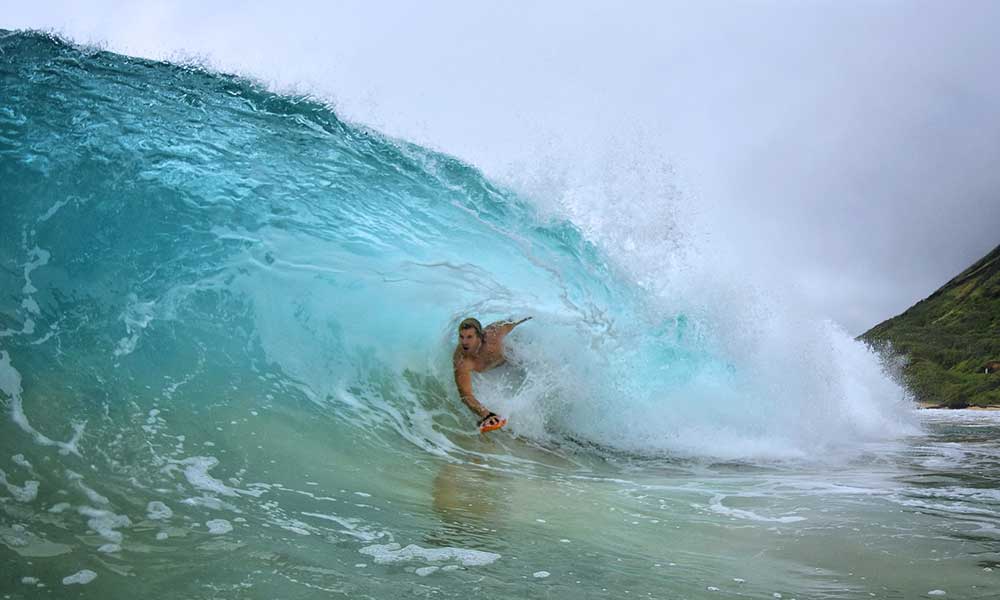Bodysurfing handplanes or “hand planes” are an important tool in any bodysurfer’s arsenal, second only to a good set of swim fins.
They are relatively cheap, easy to use, and make a massive difference when you’re on the water.
But what’s their purpose, how do they work, and what are the best bodysurfing handplanes out there?
What is a Handplane in bodysurfing?
Also known as a handboard, handslide, handlid, handplane, or even a hand plane (although these two seem to cause confusion with the tools used in woodcraft), a handboard is essentially a mini surfboard that attaches to the hand and is used for bodysurfing.
It’s usually capped at 20 inches in length and it serves as a planing device, helping the rider to achieve faster speeds and smoother rides.
How do Handboards Work?
The handboard works by providing buoyancy and keeping you kicking forward and through the waves.
It works in much the same way as a surfboard, providing the buoyancy needed to cut through the water.
It means that the bodysurfer can catch waves with ease and achieve much higher speeds.
A good handplane will provide the following benefits:
- Greater Speeds
- Higher Lift
- More Pull in the Wave
- A More Enjoyable Experience Overall
What are the Best Bodysurfing Handplanes?
The Wedge Handboard from Slyde is one of the best bodysurfing handplanes and a great option whether you’re a complete beginner or an intermediate stepping up.
It’s available in several colors and is currently priced at $169.00.
If your budget is tight, you should check out the GoFloats Handplane on Amazon.
It’s not made to the same high standard but it’s currently available for less than $20. It features an adjustable hand strap and is made from saltwater-resistant plastic.
It’s far from the best bodysurfing handboard out there, but for $20, you can’t go wrong.
How do You Make a Handplane for Bodysurfing?
A premium handboard will cost you around $150.
It’s not quite as expensive as a surfboard and is pretty reasonable when you consider the difference that it will make to your bodysurfing.
However, $150 is still a lot of money if you’re on a budget, and so you might be wondering if (and how) you can make a handplane yourself.
The good news is that it is possible.
The bad news is that it’s not easy and the end product won’t be as good as the handplanes you buy from companies like Slyde.
Home Depot is your friend here as you’ll need some quality wood, sandpaper, teak oil, and a strap.
You’ll also need to cut the wood, so if you don’t have a jigsaw and you’re not very handy, you might want to give this one a miss.
Simply draw the shape, cut the wood, sand it down, treat it with the oil, drill the holes for the strap, and run the strap through the holes.
Cork, bamboo, redwood, oak, paulownia, and even oak are all good choices for a handboard.
It won’t be as buoyant as a foam board, but it’s an environmentally friendly option and it’s also very durable.
And what’s cooler than rocking up to the beach with your own handmade, 100% unique wooden handboard?







